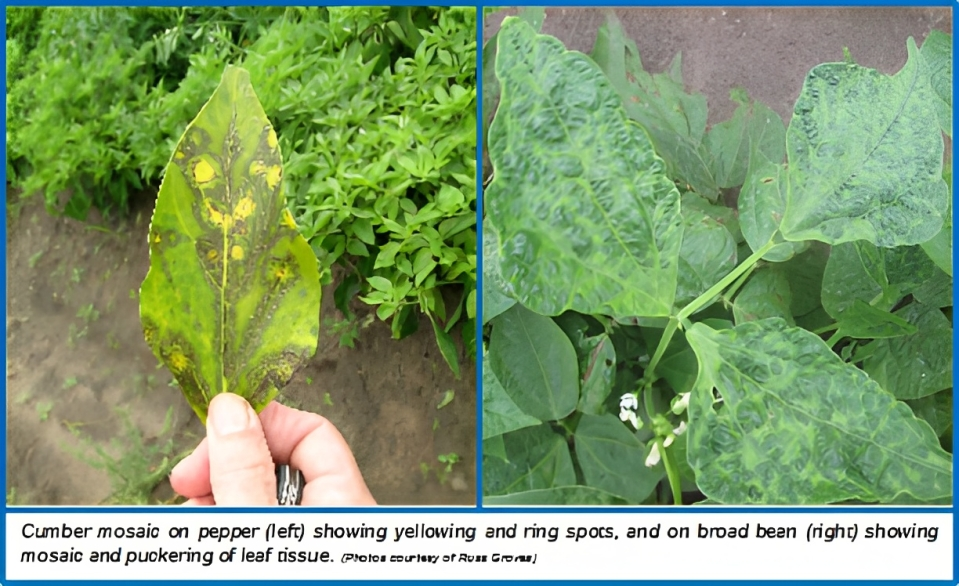Description

Copyright infringement not intended
Context: Tomato farmers in Maharashtra and Karnataka faced lower yields due to two different viral infections earlier this year. In Maharashtra, the cucumber mosaic virus (CMV) affected the tomato crop, while in Karnataka and other southern states; the tomato mosaic virus (ToMV) was responsible for the crop damage.
Details
- The cucumber mosaic virus (CMV) and the tomato mosaic virus (ToMV) have been causing more problems for tomato growers in the last three years, resulting in partial or total crop losses.
What is the difference between CMV and ToMV?
- Although they have similar names and symptoms, CMV and ToMV are different types of plant viruses that belong to different viral families and spread in different ways.
- They have different modes of transmission and environmental factors that influence their spread.
- Tomato mosaic virus (ToMV) is part of the Virgaviridae family and is related to the tobacco mosaic virus (TMV). ToMV can infect tomatoes, tobacco, peppers, and some ornamental plants.
- Cucumber mosaic virus (CMV) has a wider range of hosts that includes cucumber, melon, eggplant, tomato, carrot, lettuce, celery, cucurbits (plants in the gourd family, such as squash, pumpkin, zucchini, some gourds, etc.), and some ornamental plants. CMV was first found in cucumber in 1934, which is why it is named after it.
How do these two viruses spread?
Tomato mosaic virus (ToMV)
- Tomato mosaic virus (ToMV) is mainly transmitted through infected seeds, saplings, agricultural tools and human contact.
- The virus can survive for a long time in seeds and soil and can infect new plants easily.
- The virus can also spread through the hands of nursery workers who have not sanitized themselves properly before entering the fields. A few infected saplings can lead to widespread infection in a matter of days.
Cucumber mosaic virus (CMV)
- Cucumber mosaic virus (CMV) is mainly transmitted by aphids, which are sap-sucking insects. Aphids can carry the virus from one plant to another and cause rapid infection.
- CMV can also spread through human contact, but the chances of that are very low. The virus thrives in conditions of high temperatures followed by intermittent rain, which allows aphids to multiply. These conditions were seen in Maharashtra, where the late rabi crop (planted in January-February) faced a sudden bout of rain followed by extreme heat.

Symptoms
Tomato mosaic virus (ToMV)
- ToMV causes yellow and green mottling on the leaves, which may also curl and blister.
- The fruit may develop brown spots and ripen unevenly.
- The virus can reduce the yield and quality of the crop significantly.
- Young plants are more susceptible to ToMV, which can be transmitted by seeds, tools, hands, or soil.
Cucumber mosaic virus (CMV)
- CMV causes similar symptoms but with a different pattern of leaf distortion.
- The leaves may be smaller and narrower than normal, and the upper and lower leaves may be more affected than the middle ones.
- The fruit may also be malformed and small.
- CMV can infect a wide range of hosts, including weeds and ornamental plants.
- The virus is spread by aphids, which can carry it from one plant to another.
How to Prevent?
- To prevent the spread of ToMV, farmers in Maharashtra have blamed seed manufacturers and nurseries for not ensuring biosafety. Tomato growers plant 3-4-inch saplings in their fields, which they buy from nurseries.
- Nurseries must treat the seeds and restrict entry into the premises to avoid contamination. “Seed treatment at the nursery is necessary to prevent future spread of the virus,” Dr M Krishna Reddy, a former head of crop protection at the Indian Institute of Horticulture (IIHR), Bengaluru, said.
- ToMV can survive in weeds and plant debris around the field and can re-infect the crop later. Therefore, need to clear the field of any weeds and plant material before planting a new crop.
Way Forward
- Biosafety standards should be followed in nurseries, and that seed treatment should be mandatory to prevent ToMV infection.
- Farmers need to inspect the saplings before planting them, and to discard any infected ones.
- Farmers should monitor their fields regularly for symptoms of ToMV, and to remove and destroy any infected plants carefully.
- There is no cure for ToMV infection, but it can be managed with good agricultural practices.
- Controlling CMV is more challenging, as it has a wide range of hosts that it can infect. The best way to control CMV is to control the aphids that transmit it. Spraying fast-acting insecticides or mineral oils on the plants to kill or repel the aphids. Farmers should be aware of aphid migration patterns and take precautions while planting their crops.
|
PRACTICE QUESTION
Q. Which of the following crops is most susceptible to mosaic virus?
A) Rice
B) Wheat
C) Tomato
D) Potato
Answer: C
Explanation: Tomato is one of the most common hosts of mosaic virus, along with tobacco, pepper, and eggplant.
|

https://indianexpress.com/article/explained/explained-economics/cmv-and-tomv-viruses-tomato-crop-maharashtra-karnataka-8774486/














